Pros
Cons
Introduction
Front
{{section_header}}{{section.name}}{{/section_header}}
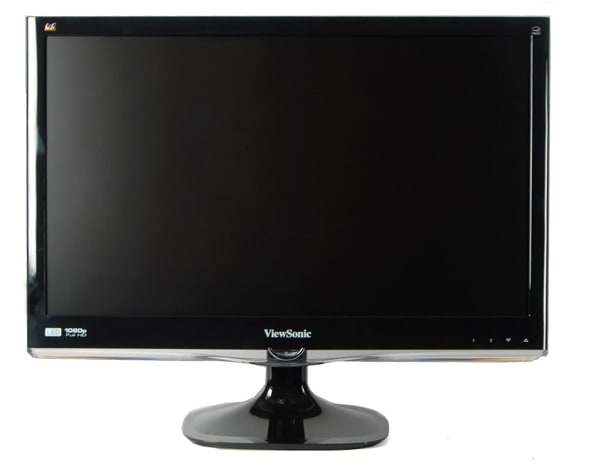
Back
{{section_header}}{{section.name}}{{/section_header}}

Sides
{{section_header}}{{section.name}}{{/section_header}}
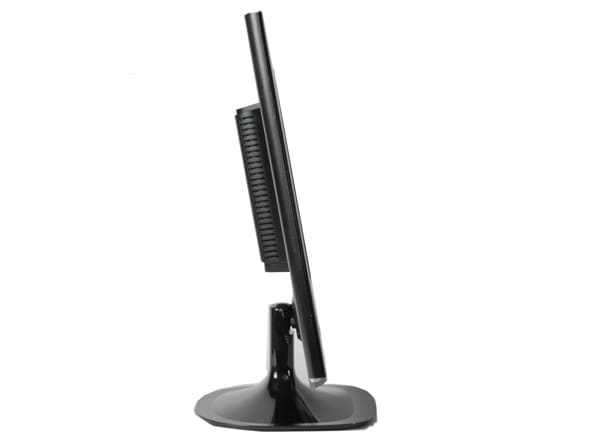
Size Comparisons
{{section_header}}{{section.name}}{{/section_header}}
In the Box
{{section_header}}{{section.name}}{{/section_header}}
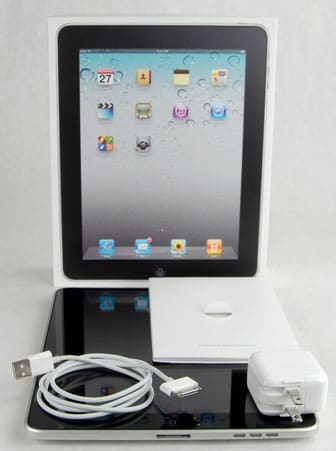
Along with your tablet, included in the packaging for the Thrive is assorted documentation, a USB cable, and an AC power converter to charger.
Handling
{{section_header}}{{section.name}}{{/section_header}}
The {{product.name}} rests in your hands fairly easily if you hold it at a landscape orientation. You should be careful not to put your hands over the oddly-placed front camera though, as it is very easy to block and smudge up with your fingers. Toshiba seems to have gone out of their way to make sure that the Thrive was lighter than the iPad 2, so there isn't a lot of fatigue when holding the it over long periods of time.
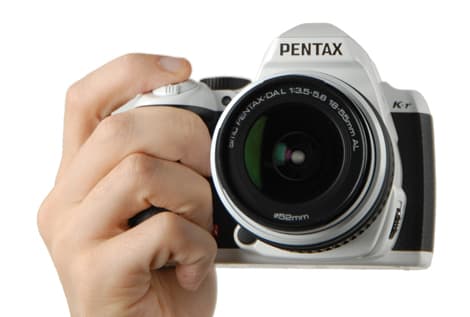
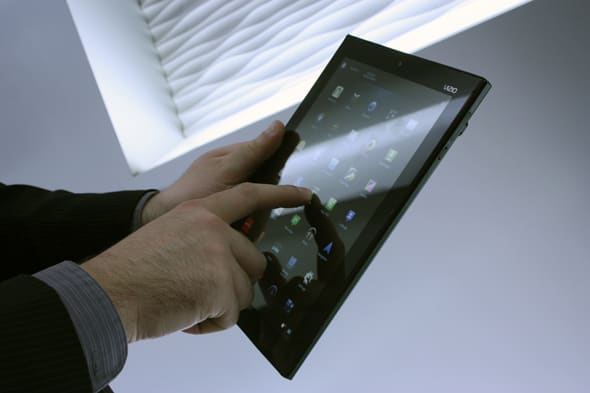
Screen
{{section_header}}{{section.name}}{{/section_header}}
Like most high-end tablets, the {{product.name}} has a backlit LCD screen, which will give you certain advantages and disadvantages inherent to its design. Namely, it gives you a great picture with vivid colors and decent resolution at the cost of performance in the outside world.
Because the user interface is primarily touch based, almost all of your interaction with your tablet will be via the screen itself. As always, be aware that this will make fingerprints accumulate like mad on your screen, so you may want to have a cloth handy should this bother you too much. Because the {{product.model}} has one of the higher-end screens installed in the device itself, you should be able to tap the controls with no worries about responsiveness, as the lightest brush will register on the screen.

Indoor & Outdoor Use
{{section_header}}{{section.name}}{{/section_header}}
Because the {{product.name}} has an LCD screen, it suffers from very poor visibility in bright lighting conditions. This happens simply because of the screen design: where eInk screens rely on ambient light to make their images visible, LCD screens require a backlight to show their image. When an outside light source overpowers the backlight, it is very difficult to see what is on the screen; compound this with the {{product.name}}'s reflectivity problems, and you have a tablet that does not work well in conditions brighter than thick cloud cover.
Controls
{{section_header}}{{section.name}}{{/section_header}}
Users accustomed to the controls of the Motorola Xoom will find a refreshingly similar interface, with the same version of Android (3.0 Honeycomb) and a similar but pared-down range of applications pre-loaded on the unit. The virtual controls are identical: the touchscreen is responsive and the controls are clearly marked.
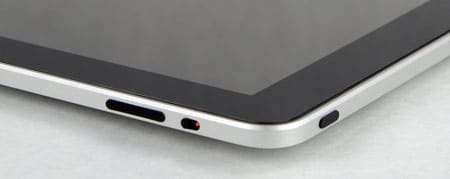
The controls on the top right side of the iPad body: volume, lock and power.
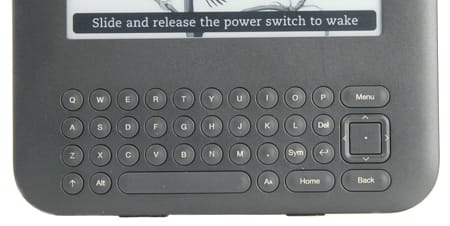
As for physical controls, there are only limited buttons on the edges of the {{product.name}}, but they are useful enough. After the power button, there are two actions governed by physical controls: volume, and accelerometer lock. The volume control is nice if you don't feel like hunting for the virtual volume control all the time, and the accelerometer lock is good if you want to pass your tablet around without the picture changing orientation. That's about it though.
Connectivity
{{section_header}}{{section.name}}{{/section_header}}
This tablet is great on the connectivity front. Not only can the {{product.name}} make the most of its 802.11n wireless connection, but you can also use it with cell service if you have a data plan, and on top of that, it has full-sized HDMI and USB ports hidden on the side. This allows you to port your media to a TV, which is great for those with no streaming device for their TV.

Here we see a Lightning dock in its natural habitat.
All that being said, the wireless connection will give you great download speeds (assuming your router is relatively new), peaking at 1.3 Mb per second in our labs, which is respectable for a portable device like the {{product.name}}.
Battery Life
{{section_header}}{{section.name}}{{/section_header}}
To put it bluntly, the battery life of the {{product.name}} is disappointing at best. While no tablet with an LCD screen is going to last long with its power-hungry backlight, it is a little disappointing to the perpetual traveler if their brand-spanking new toy won't last them for an entire flight or car ride. While the {{product.name}} can play audio for more than 24 hours, it struggles to keep its user occupied with an eBook for more than 5 and a half hours, or video playback for 6 and a half hours.
In our tests, we crank the backlight to maximum and turn the wireless card off, so your mileage may vary if you decide to alter your settings at all. Keep in mind, though, that programs that run in the background, the wireless card, and downloads will all increase power draw and subsequently shorten battery life. You may also increase battery life a bit by turning down the backlight, but that too has its drawbacks: the {{product.model}} already does not function well in the sunlight, and turning down the backlight decreases visibility significantly.
Reading Books
{{section_header}}{{section.name}}{{/section_header}}
The {{product.name}} comes preloaded with Toshiba's eBook reading software that can read a range of formats, but many users will probably elect to install their own preferred eBook application. Thankfully, every major market application is free, so there should be no issues in acquiring them.
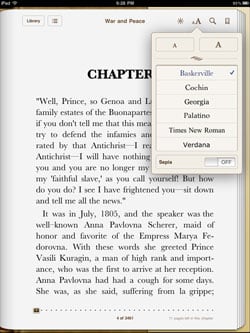
The iBooks program offers a range of controls for font and text size
Once you've chosen your desired app, the look and feel of reading eBooks on the {{product.name}} is much the same as it is on any other android tablet: you can tap or swipe to change pages, and you can even change the color of the "paper" or size of the font. If there's one thing higher-end tablets seem to consistently do right, it's eBooks.
Buying Books
{{section_header}}{{section.name}}{{/section_header}}
Depending on which store you decide to use, the process will be different, but only slightly. In general, the application will ask you to fill out your billing and account information, and from then on all you have to do is tap "buy" when you see a book you like.
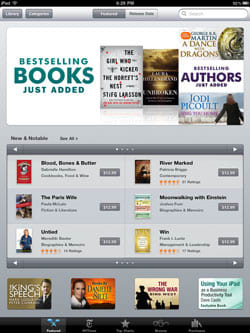
Books can be purchased on the iPad through the iTunes store
To find specific titles that you enjoy, most eBook stores are set up so that you can browse by genre, author or bestsellers. If none of these options are right for you, you can always QWERTY search for the specific title or author of your choice, as the {{product.model}}'s huge keyboard is very nice, and capable of using foreign-language keyboards as well (though nowhere near as many as the Xoom) TKTKTK
eBook Formats
{{section_header}}{{section.name}}{{/section_header}}
Due to the {{product.model}}'s ability to download any eReader software in the Android Market, the tablet can read just about any format of eBook so long as the correct software is installed. Still, the {{product.name}}'s score was hurt here, as the proprietary eBook reader software is somewhat limited.
{{product.manufacturer_specs['eBook Formats Image']}}
Newspapers & Magazines
{{section_header}}{{section.name}}{{/section_header}}
Purchasing and subscribing to newspapers and magazines is just as easy as purchasing an eBook through your eBook store of choice. Simply find the titles you're interested in, and click buy. Once you've done this (assuming your account and billing information is in order), your periodical will begin downloading, and can be read using your eBook software.
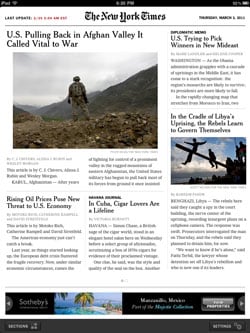
The New York Times is available on the iPad through their own app
eBook Battery Life
{{section_header}}{{section.name}}{{/section_header}}
{{product.manufacturer_specs['eBook Battery Life Image']}}
Music & Audio Controls
{{section_header}}{{section.name}}{{/section_header}}
When you decide that you want to listen to music on your {{product.name}}, you can either stream it or load up a few files onto the hard drive via the USB connection and Android's storage utility. If you go the native storage route, once you open the interface you'll be pleasantly surprised by a simple-yet-functional interface native to Honeycomb-running systems.
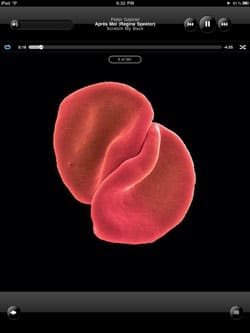
The iPod app shows the cover art while playing music
Once the music is playing, you can control your playback with the standard playback options available to you on the screen, including forward/back, a scrub bar, play/pause, shuffle, repeat, etc. If you'd like, you can also create playlists as well, and edit them as you see fit.
Music & Audio Management
{{section_header}}{{section.name}}{{/section_header}}
The music and audio file management system of the {{product.name}} is actually pretty nice. Though it can take a little getting used to at the start if you don't like the cover splash arrangement, you can change the format in which the files are displayed on the screen with a few taps of your finger. Each screen is as visually appealing and smoothly animated as the last.
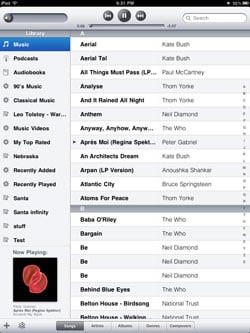
Audio files can be sorted by title, artist, album, genre or composer
Music & Audio Formats
Music & Audio Battery Life
Video Controls
{{section_header}}{{section.name}}{{/section_header}}
Though the video controls of the {{product.name}} are not terribly extensive, what is present on the screen is very functional and does not get in the way of your playback. Present on the bottom of the screen is a scrub bar, and a play/pause button. If you'd like to change the volume, you're best off using the physical controls at the top of the unit itself.

Video Management
{{section_header}}{{section.name}}{{/section_header}}
Videos on the {{product.name}} are best managed by the Toshiba Media Player. Once they are loaded on your {{product.model}}, they can be found again in the video library section of the Media Player to browse through, but there really aren't many sorting options. Still, you probably won't have that many video files on a {{product.model}} with a smaller hard drive on it.
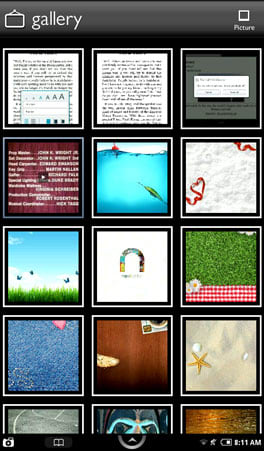
The gallery is used to navigate videos, and only offers thumbnails
Video Formats
Internet Video
{{section_header}}{{section.name}}{{/section_header}}
In addition to all the streaming options available over the Android Market, with your {{product.name}} you can access YouTube with a pre-loaded application on your tablet. The home screen has access to just about every single option you could want for the internet streaming service, as well as a thumbnail wall for easier browsing.

Video Battery Life
{{section_header}}{{section.name}}{{/section_header}}
For those of you who want to check your email on the go, the Android 3.1 operating system gives you the ability to set up POP/IMAP inboxes, as well as use your Gmail account in a rather attractive and well put-together interface designed by Google. Reading email is easy on the giant 10 inch screen, and composing new messages is easy with the large keyboard with haptic feedback.
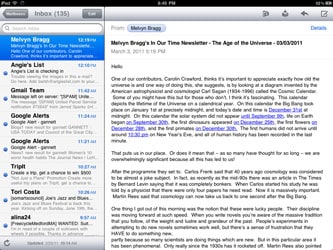
The iPad email app is basic, but adequate for most users
Web Browsing
{{section_header}}{{section.name}}{{/section_header}}
The {{product.name}}'s browser is the same, clean, chrome-based utility that we've seen on the other Android 3.1 tablets. This is a very good thing: not only is it very functional, but it is very visually attractive, and light enough to perform without too many hiccups in performance.
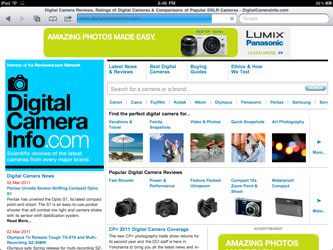
The iPad boasts a fully featured Safari web browser
Once your browser is open, you can either browse in one tab or many, using the URL bar at the top to enter in your intended destination. What sets Android 3.1 devices apart from the iPad is the embedded flash support that the {{product.name}} and others have. Want to go watch a flash movie on the iPad? Can't do it. Want to watch a flash movie on the {{product.name}}? Load it up, it'll work fine!
Internet Apps
{{section_header}}{{section.name}}{{/section_header}}
Because the Thrive runs Android 3.1 and has access to the Android Market, you should have no difficulty finding an application for just about anything you could want on your tablet. There are adaptive learning software applications, games, fantasy football apps, eReader software, new media players and a litany of other pieces of software that you can buy and download right to your tablet. Outside of the Apple App Store, you will not find a larger application market online.

Other Internet Features
{{section_header}}{{section.name}}{{/section_header}}
Possibly one of the cooler aspects of having an Android tablet that's decked-out with the hardware to make the most of it is the ability to talk over Gmail or Skype with face time. Load up either of the applications, and then simply call your friend. Once they pick up the user-facing camera will flick on, and allow you to chat with your friends much like you would at home.
{{product.manufacturer_specs['Other Internet Features Image']}}
Device & Specs
{{section_header}}{{section.name}}{{/section_header}}
Both devices are remarkably similar, with near-identical screen sizes and DPI, the same processor and amount of RAM. Aside from the cheap-feeling casing on the {{product.name}} and the much-increased language support on the Xoom, the two devices are nearly identical in just about every way shape and form.
Screen
{{section_header}}{{section.name}}{{/section_header}}
As similar as each device is, there are some key differences. Though both the Xoom and the {{product.model}} both have similar resolutions and dimensions, they do differ in contrast and color performance: in both areas, the {{product.name}} passes its elder brother, allowing improved picture performance.
Battery
{{section_header}}{{section.name}}{{/section_header}}
Well here it is: this is where the Xoom really takes off in comparison to the lighter {{product.name}}. Where the Thrive struggles to display video and eBook content for more than 6 hours, the Xoom exceeds 7 with the backlight cranked. If you need your tablet to keep you entertained for a long car ride or flight, the Xoom will last over an hour longer in most cases.
eReader
{{section_header}}{{section.name}}{{/section_header}}
Because both tablets have the same framework and applications in place to read eBooks, there is really nothing of note that sets one apart from the other.
Internet
{{section_header}}{{section.name}}{{/section_header}}
Again, both tablets are built on the same operating system and have access to the same applications on the Android Market, so they both are nigh-indistinguishable in performance in this area. You can't go wrong with either.
Device & Specs
{{section_header}}{{section.name}}{{/section_header}}
Samsung managed to pack a decent amount of performance into the smaller Galaxy Tab, but it doesn't quite give a comparable performance to the {{product.name}}. With a better operating system, bigger screen, and better processor, the {{product.name}} trounces the Galaxy Tab in just about everything but screen reflectiveness.
Screen
{{section_header}}{{section.name}}{{/section_header}}
Despite the obvious differences in screen size, the more compact Galaxy Tab also falls short in contrast and color gamut, but it does have a higher DPI than the {{product.model}}. Outside of this, virtually the only advantage it holds over the {{product.name}} is the fact that the Galaxy Tab seems to reflect less light than the {{product.model}}.
Battery
{{section_header}}{{section.name}}{{/section_header}}
Neither battery is stellar, but the Galaxy Tab manages to keep its videos playing and eBooks reading almost 2 hours longer than the {{product.name}}. Though it comes at the cost of performance, if you're looking for longevity from your battery, the Galaxy Tab is the clear choice here.
eReader
{{section_header}}{{section.name}}{{/section_header}}
Both tablets have the same access to the Android Market, and therefore the same eReader apps. If you're looking at tablets for the sole purpose of reading eBooks, however, take a second look at the Galaxy Tab, as it sits a little more naturally in your hands, and isn't quite as clunky as the {{product.name}}.
Internet
{{section_header}}{{section.name}}{{/section_header}}
Neither tablet holds the advantage here, aside for apps requiring a certain iteration of the Android OS. Both have access to the Android Market, so both have outstanding internet features.
Device & Specs
{{section_header}}{{section.name}}{{/section_header}}
Despite the obvious differences that the iPad and the {{product.model}} have, they are somewhat similar machines. They have comparable processors and memory, as well as a similar screen size and weight. Though the iPad has an IPS display that allows for greater viewing angle, we've yet to come across a situation where a TFT LCD display is insufficient for personal operation of a tablet.
Screen
{{section_header}}{{section.name}}{{/section_header}}
Though the screens are roughly the same size, the iPad 2's screen is better, mostly because it is able to output a higher peak brightness than the {{product.name}}, allowing it to show a decent picture in a slightly larger range of lighting conditions than the Toshiba. On top of that, it has a wider viewing angle due to the IPS display, and a better color gamut to boot.
Battery
{{section_header}}{{section.name}}{{/section_header}}
Much like the Xoom, the iPad 2 offers greater battery life than the {{product.name}}, which struggles in this area. Though performance between the Thrive and the iPad are roughly comparable, the battery life just isn't available to the
eReader
{{section_header}}{{section.name}}{{/section_header}}
Because many of the most popular eReader applications are just about identical on iOS and Android, there really isn't a recommendation we can make on software, but the iPad 2 manages to function slightly better in the outdoors, and has a somewhat longer battery life than the {{product.name}}. This makes it a better choice for an eReader.
Internet
{{section_header}}{{section.name}}{{/section_header}}
Both tablets have access to a huge range of online content, and you really can't go wrong with either. However, be wary that the {{product.name}} has native flash support, whereas the iPad 2 does not. Should you enjoy flash movies, the {{product.model}} is the better tablet for you.
Conclusion
Performance
The {{product.name}} performs well with a decent screen, industry standard processor, and decent memory capability. It lags behind in battery performance, however, so keep that in mind when you scoff at the much-inflated pricetags of the Xoom and iPad 2 in comparison.
Screen Performance
The screen of the {{product.name}} is great in comparison to other tablets in its lower price range, but it isn't so stellar when compared to higher-end tablets. It still shouldn't disappoint the casual user, however, as comparing performances among tablets is splitting hairs, especially on the high end. The controls are very responsive, and easy to use.
Battery Life
We're not going to lie: we were not impressed with the battery life of the {{product.name}}. Though it's enough to let you read an eBook before bed, or play games during your morning commute, it will absolutely let you down on longer flights or sojourns. Considering the fact that the {{product.model}} performs very well for its price range, it's not surprising that Toshiba had to cheap out in one area in order to keep the price down, but you should be aware that battery life is not a strength of the {{product.model}}.
Ereader:
A tablet with an LCD screen is never going to be as good of an eReader as one with an eInk screen, but the {{product.name}} can handle the task in lower light conditions. Able to download any eReader application on the Android market, the {{product.model}} should hold its own fairly well here. Just be aware that it does not have battery life that spans several days like most tablets with eInk screens.
Audio & Video:
This is a task that Android 3.1 tablets handle very well, as every screen used to play back and manage your media libraries are sleek, functional, and gorgeous. Though the battery won't last you on any long-haul intercontinental flights, it should do the trick if you're just browsing on the subway ride home, or stuck in a car for a short while.
Email & Web Browsing:
Android 3.1 gives the {{product.name}} a great email and web browsing interface, familiar and functional to Chrome users. The browser allows you to do just about everything you could on a computer's web browser, within reasonable limits. The {{product.model}} is very good in this regard.
Meet the tester
A seasoned writer and professional photographer, Chris reviews cameras, headphones, smartphones, laptops, and lenses. Educated in Political Science and Linguistics, Chris can often be found building a robot army, snowboarding, or getting ink.
Checking our work.
Our team is here to help you buy the best stuff and love what you own. Our writers, editors, and experts obsess over the products we cover to make sure you're confident and satisfied. Have a different opinion about something we recommend? Email us and we'll compare notes.
Shoot us an email